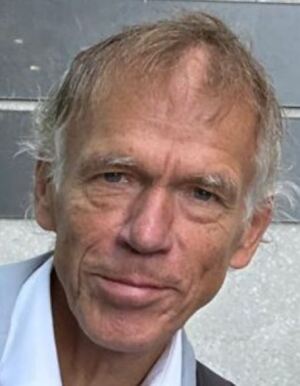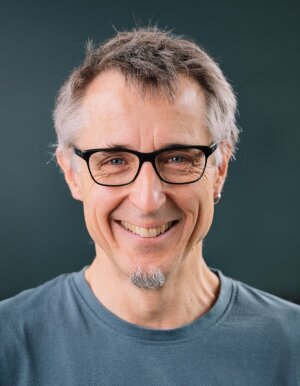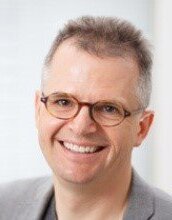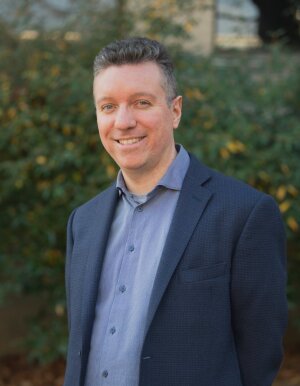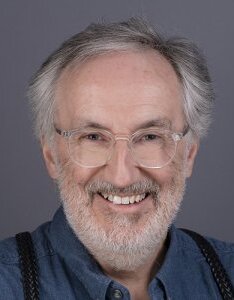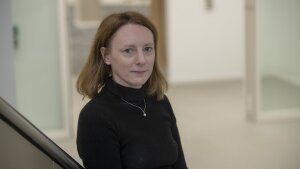- Light
Meldung vom:
Zur Original-Meldung
Das Physikalische Kolloquium findet, wenn nicht anders angegeben, jeweils um 16:15 Uhr im Hörsaal 1 Abbeanum, Fröbelstieg 1 statt. Die Kolloquien im Hörsaal 1 Abbeanum können auch im live stream verfolgt werden:https://online.mmz.uni-jena.de/beta/livestream/?hsid=2251_hsabb1Externer Link
-
28. April 2025
Prof. Axel Brandenburg
Foto: privatGastgeber Prof. Sebastiano Bernuzzi
Primordial magnetic fields and relic gravitational waves messengers of the first microseconds
Prof. Axel Brandenburg
(Nordita, KTH Royal Institute of Technology and Stockholm University)Our detailed understanding of cosmology rests on only a few firmly established observational probes. One of them derives from the expansion history of the universe and the clustering of galaxies observed in the large-scale structure of galaxies observed today. The other is the measurement of temperature anisotropies and polarization in the cosmic microwave background that formed when the universe was 400,000 years old. Finally, there is the measurement of the abundances of light elements in the universe that constrain the physics within the first three minutes. However, we lack measurements of the first microseconds when weak and electromagnetic forces decoupled and particles attained their masses and quarks got confined inside nucleons. During these times, physics beyond the standard model must have determined the matter-antimatter asymmetry, produced dark matter, and led to the emergence of neutrinos. We can probe these very first moments through measurements of primordial magnetic fields and relic gravitational waves. The evolution of magnetic fields can be traced in an evolutionary diagram of magnetic field versus length scale and it follows a characteristic path. Relating the start- and endpoints to each other is an important theoretical accomplishment. At the same time, observational constraints in radio and gamma ray frequencies begin to narrow down the allowed parameter space in the evolutionary diagram. In this colloquium, I will discuss several of the theoretical and observational discoveries that make primordial magnetic fields and gravitational waves powerful probes of the first microseconds of the universe.
-
5. Mai 2025
Prof. Markus Oberthaler
Foto: privatGastgeber Prof. Dr. Martin Gärttner
Ultracold meets Ultrahot and Ultralarge: A Quantum Field Simulator in the Lab
Prof. Dr. Markus K. Oberthaler
Kirchhoff-Institute for Physics, Heidelberg University
The experimental platform of ultracold gases provides a unique opportunity to study a wide range of phenomena in physics. I will give an overview of how ultracold gases can be employed to investigate the physics in the quantum field theoretical limit. As a first example I will present the connection to quark-gluon plasma, a state of matter created after the collision of heavy ions at CERN. This state of matter is known as the hottest state of matter produced on Earth and has a temperature of more than 1012°K, which is about 20 orders of magnitude higher than that of ultracold gases i.e. ultrahot. Nevertheless, the far from equilibrium situation in ultracold gases after a quench through a quantum phase transition exhibits a temporal evolution that is analogous to that predicted for the state of matter immediately after a heavy ion collision [1]. The key to these experiments lies in the utilisation of composite quantum fields, rather than the fundamental atomic fields of ultracold gases. This approach presents novel avenue for investigating quantum field theoretical settings [2] with experiments - quantum field simulators. As a second example of exploring ultralarge, I will present our study of the expansion of spacetime in the limit of the cosmological principle, which assumes homogeneity and isotropy of the universe. Assuming this, the metric for large scales is given by the Friedmann-Lemaitre-Robertson-Walker metric, which is fully characterised by the sign of the curvature and a general scale factor, both are under full control in the experiments with ultracold gases. I will discuss how different curvatures can be realised as well as particle production in expanding spacetime can be detected [3]. These are just two examples of how the experimental platform of ultracold gases can be utilised to address fundamental questions; there are many more to come.
References
[1] M. Prüfer, et al., Nature, 563, 217 (2018)
[2] M. Prüfer, et al. Nature Physics, 16, 1012 (2020)
[3] C. Viermann, et al. , Nature, 611, 260 (2022) -
19. Mai 2025
Prof. Harald Giessen
Foto: privatGastgeber Prof. Giancarlo Soavi
Topological plasmonics and twistronics:
Ultrafast vector movies of plasmonic skyrmions, merons, quasicrystalline structures and skyrmion bags on the nanoscaleProf. Dr. Harald Giessen
(Universität Stuttgart)We utilize a new technique, time-resolved vector microscopy, that enables us to compose entire movies on a sub-femtosecond time scale and a 10 nm scale of the electric field vectors of surface plasmon polaritons. By using our vector microscopy technique, we are able to image the plasmonic spin-momentum-locking and the plasmonic skyrmion dynamics. Depending on the shape and geometrical phase, in combination with the helicity of the excitation beam, topological plasmonic quasiparticles are created: skyrmions, merons, as well as quasicrystalline excitations with 4D topology. We observe their entire field vector dynamics at subfemtosecond time resolution [1-6]. The figure on the right depicts a snapshot of the skyrmion electric field vector arrangement with sub-10 nm resolution on a single crystalline, atomically flat gold surface.
When applying the concept of twistronics to plasmons, intriguing topological excitations arise, such as skyrmion bags. We find magic angles similar to twisted graphene which defines exceptional topological features. Utilizing topological plasmonics and twistronics will open the door to linear optical features on the few nm length scale [7], without the need for techniques such as STED.
References
[1] S. Tsesses et al., Science 361, 993 (2018).
[2] S. Tsesses et al., Nano Lett. 19, 4010 (2019).
[3] B. Frank et al., Science Advances 3, e1700721 (2017).
[4] G. Spektor et al., Science 355, 1187-1191 (2017).
[5] T. Davis et al., Science 367, eaba6415 (2020).
[6] S. Tsesses et al., Science 387, 644 (2025).
[7] J. Schwab et al., Nature Physics (2025), in press.Harald Giessen graduated from Kaiserslautern University with a diploma in Physics and obtained his M.S. and Ph.D. in Optical Sciences from the University of Arizona in 1995 as J.W. Fulbright scholar. After a postdoc at the Max Planck Institute for Solid State Research in Stuttgart he moved to Marburg as assistant professor. From 2001-2004, he was associate professor at the University of Bonn. Since 2005, he is full professor and holds the Chair for Ultrafast Nanooptics in the Department of Physics at the University of Stuttgart. He is also co-chair of the Stuttgart Center of Photonics Engineering.
His research interests include Ultrafast Nano-Optics, Plasmonics, Active, Switchable and Chiral Metamaterials, 3D Printed Micro- and Nano-Optics, Medical Micro-Optics, Miniature Endoscopy, Novel mid-IR Ultrafast Laser Sources, Applications in Microscopy, Biology, and Sensing. He has spun out three companies based on his research: NT&C (single particle spectroscopic microscopy), Stuttgart Instruments GmbH (Ultrabroadband tunable fs and ps laser sources from visible to mid-IR), and Printoptix GmbH (3D printed microoptics). -
2. Juni 2025
Prof. David Radice
Foto: privatGastgeber Prof. Sebastiano Bernuzzi
Multimessenger Astrophysics with Neutron Star Mergers
Prof. David Radice
(The Pennsylvania State University)Kilonovae are cosmic explosions in which of heavy r-process elements, such Uranium and Gold are produced. What can they reveal about the dynamics of the astrophysical phenomena that power them? How well do detailed theoretical models align with observations? In this talk, I will explore these questions, emphasizing some of the gaps in our current understanding and the ongoing efforts to bridge them. I will also present our simulation modeling efforts and recent results from our group.
-
16. Juni 2025
Prof. Mark Walker, John Bigelow Professor of History Union College, Schenectady, NY USA
Foto: privatGastgeber: Prof. Ulf Peschel
"Werner Heisenberg, J. Robert Oppenheimer, and the Bomb"
Prof. Mark Walker
(John Bigelow Professor of History, Union College, Schenectady, NY USA)Werner Heisenberg and J. Robert Oppenheimer were two of the most important physicists in the twentieth century. Each played an important role in their respective country's projects (Nazi Germany for Heisenberg, the United States for Oppenheimer) to build atomic bombs during the second world war. Myths and legends were created around both men in the postwar period as they tried to deal with the legacies of the Holocaust and the attacks on Hiroshima and Nagasaki. This talk will compare and contrast the careers of these two scientists.
-
7. Juli 2025
Prof Taylor
Foto: privatGastgeber Dr. Federico Capone, Prof. Dr. Martin Ammon
From black holes to quantum computing and AI
(abgesagt/ cancelled, neuer Termin im Wintersemester geplant)
Prof. Marika Taylor
(University of Birmingham)The study of black holes has been at the centre of research into theoretical physics for over five decades, following the seminal discovery by Hawking of Hawking radiation. Black holes provide a natural laboratory for testing physics under extreme conditions, and for developing deeper understanding of the laws of Nature. Remarkable new connections have been found in recent years between black holes and future computing. A quantum computer makes use of the quantum states of subatomic particles to store and process information. Quantum computing has the potential to solve certain types of problems much more quickly than standard computers can do. We now believe that black holes are the most efficient quantum computers that can exist in Nature, and thus study of black holes can lead to new insights into quantum computers and efficient AI algorithms. In this talk we will explain what black holes might teach us about future computing and conversely what this implies for the fundamental properties of black holes.
